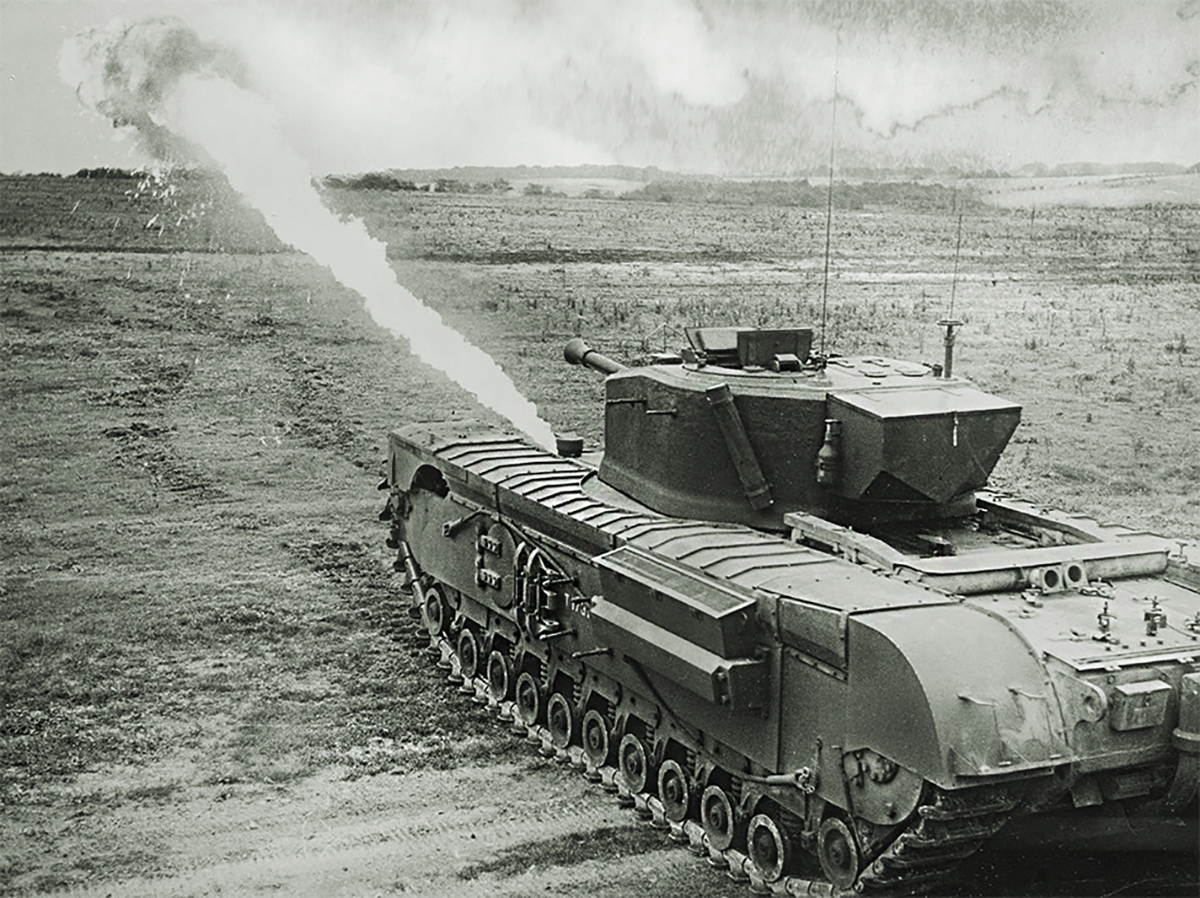Hello bajtársak and fellow forumdwellers,
Britain had a very unusual tank classification system compared to other nations.
Infantry tanks were designed to be slow as walking pace so infantry could keep up with it hence the “infantry tank” designation, they were heavily armoured and their task was to suppress enemy as well as clear obstacles.
Cruiser tanks on the other hand were designed to be as fast and light as possible to keep up with cavalry.
Both class concepts are obvious dead ends, tanks need to be supported by mechanised or at the very least motorised infantry, this however did not stop the overly conservative British General Staff from commissioning new tanks that were out-dated even before the first tank rolled off the assembly line.
Winston Churchill famously said:
“That is the tank they named after me when they found out it was no damn good!”
The main design flaw of the Churchill tank is that it was designed for the battlefields of the first world war, a mistake that made it the most fearsome Allied tank for Axis soldiers.
The Churchill could climb hills and mountains other tanks could not, often surprising Germans that thought the hill to be tank proof.
Its long design and wide double-tracks allowed it to cross even the widest trenches.
Its thick armour was impervious to all standard German anti-tank guns, anything below an 88mm would easily ricochet off the frontal plate at normal fighting distances.
The Churchill tank carried Britain to victory, it filled a unique role no other Allied tank in the west could, breaking through even the most fortified defensive lines.
The Churchill Crocodile is the most impactful and terrifying variant.
Its 152mm thick frontal armour can withstand hits from any Panzer.
The main armament is a 75mm Ordnance QF howitzer, inadequate against most tanks but excellent against soft targets as well as gun emplacements.
The tank´s most fearsome aspect is the flamethrower built into its hull, a deadly tool against dug-in enemies or fortified bunkers.
Its unusually well protected tracks make disabling the tank a difficult task.
Its psychological aspect is undeniable, the appearance of a Churchill Crocodile tank made even the most battle-hardened and fanatic soldiers think twice about holding their position.
Though the Crocodile is powerless against Panther and Tiger tanks, it’s a straight upgrade from the Jumbo tank, a true rolling bunker with a flamethrower.
